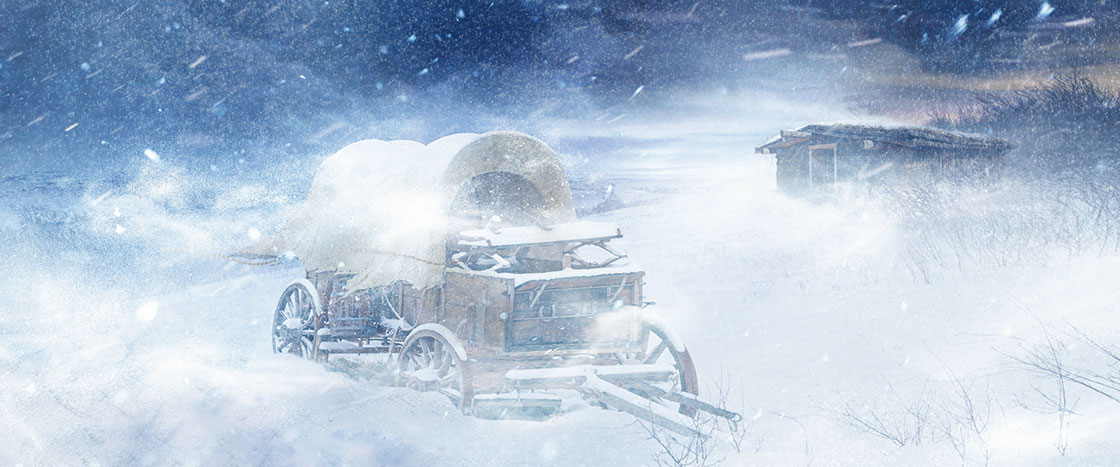Walter Allen kicked off his quilt and scampered out of bed. It was January 12, 1888, in Groton, a town on the Northern Plains. After two weeks of brutally cold weather, the morning had dawned bright and warm. It was almost like spring had arrived.
Walter, 8, quickly got dressed, wolfed down a bowl of steaming porridge, kissed his mother goodbye, and hurried off to his schoolhouse, which was half a mile from his home on Main Street.
All across the Northern Plains that morning, thousands of children set out for school just as Walter did, wearing only their school clothes—trousers and woolen shirts for the boys, calico dresses and petticoats for the girls. Most had been cooped up at home during the past two weeks of dangerous cold, and it was a relief to be in the fresh air, free from their cramped and smoky houses, from musty wool coats and scratchy scarves and heavy overshoes.
Some of the children at Walter’s school lingered outside on the rickety steps, marveling at the unusual color of the sky—golden behind a veil of clouds. “Like a fairy tale,” one of them said.
But not everyone was smiling at the surprisingly warm weather and glowing sky. Some knew better than to trust the January weather on the Northern Plains, the part of America that today includes North and South Dakota, Nebraska, Iowa, and parts of Minnesota. Wasn’t there something spooky about the color of the sky? Wasn’t it odd that the temperature had jumped 40 degrees overnight?
Dakota farmer John Buchmillar thought so. He told his 12-year-old daughter, Josephine, that she’d be staying put that day. “There’s something in the air,” he told her with a worried glance toward the heavens.
Walter Allen kicked off his quilt and jumped out of bed. It was January 12, 1888, in Groton, a town on the Northern Plains. After two weeks of brutally cold weather, the morning had dawned bright and warm. It felt almost like spring.
Walter, 8, quickly got dressed. He ate breakfast and kissed his mother goodbye. Then he headed for his schoolhouse, half a mile from his home on Main Street.
All across the Northern Plains that morning, thousands of kids set out for school just as Walter did, wearing only their school clothes. Boys wore trousers and woolen shirts. Girls wore calico dresses and petticoats. Most of the kids had been cooped up at home for the past two weeks of dangerous cold. They were happy to be in the fresh air, free from musty wool coats and scratchy scarves and heavy overshoes.
Some of the kids at Walter’s school lingered outside on the steps, looking at the unusual color of the sky—golden behind a veil of clouds. “Like a fairy tale,” one of them said.
But not everyone was smiling at the warm weather and glowing sky. Some knew better than to trust the January weather on the Northern Plains, the part of America that today includes North and South Dakota, Nebraska, Iowa, and parts of Minnesota. Wasn’t there something spooky about the color of the sky? Wasn’t it odd that the temperature had jumped 40 degrees overnight?
Dakota farmer John Buchmillar thought so. He told his 12-year-old daughter, Josephine, that she’d be staying put that day. “There’s something in the air,” he said. He looked worried.


